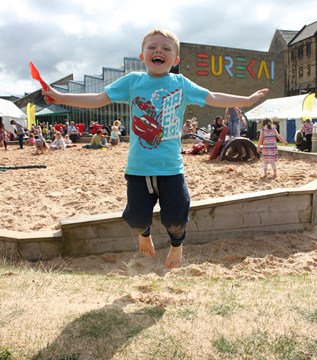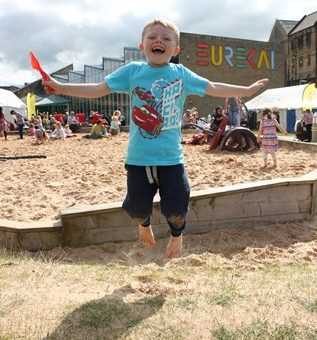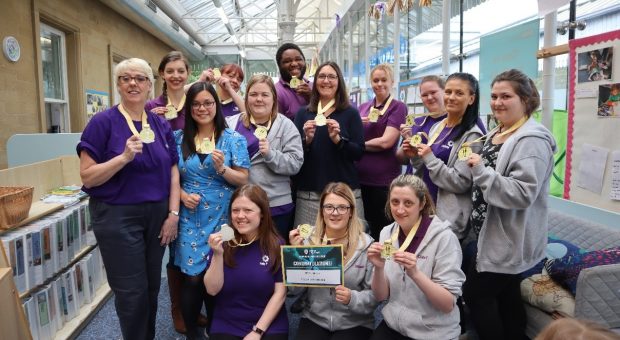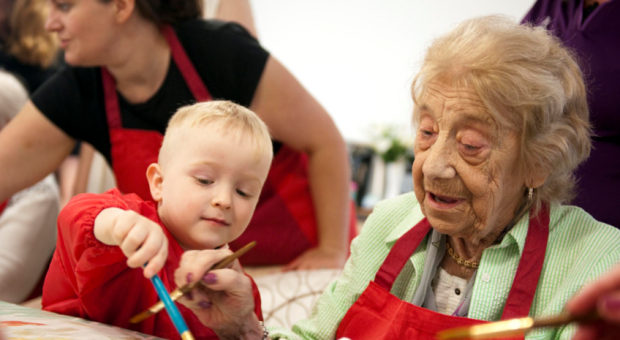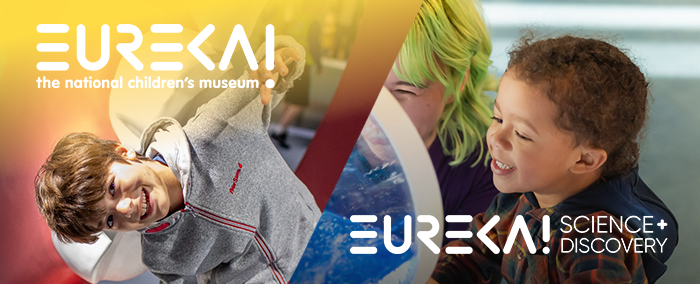The importance of moving our bodies has long been recognised as essential in order to remain fit and healthy, and the recent emphasis on the importance of children being active, alongside eating a balanced and nutritious diet, has focussed on the obesity epidemic and its associated health issues.
Whilst the significance of this cannot be underestimated, there are other good reasons for running, rolling, puddle-jumping, pedalling and even play-fighting, and this is attracting an increasing amount of interest from childworkers, parents, teachers and researchers.
We begin moving even before we’re born, twisting and turning in the womb as we grow and develop, preparing to enter the world which, for better or worse and to the great dismay of our anxious expectant parents, is often accompanied by a great deal of kicking and screaming. We don’t stop there, however; babies are continuously moving their little arms and legs like tiny windmills, toddlers scoot and scurry around and if they’re fortunate enough to have playmates, they’ll be relentlessly hugging, pushing and pulling each other. Once they hit preschool and primary age these early physical behaviours and interactions become more physically, socially and emotionally complex.
So what is the real purpose of all this moving about? Is it just for the sheer joy of it or is there something more fundamental and significant which underlies our innate desire to engage in physical play? Frances M Carlson, author of Big Body Play notes that children engage in physical play in many different ways and environments: it can be on their own, with objects, with other children or with adults. It occurs as part of free play or may be part of organised games such as tig or netball with associated rules that may be pre-set or often made up by the children themselves. One thing is certain, children’s engagement in physical play knows no bounds, and as they gain confidence and hone their decision-making skills they inevitably seek opportunities to make their play more difficult and challenging; for example, choosing to take the higher, steeper riskier route up to the top of a climber rather than the “easier” option they’ve already mastered.
All of this points not only to the importance of full body play in the development of motor skills, but also to the benefits for conceptual learning, building communication and social skills, creativity and thinking skills, confidence and resilience, and evidence is mounting to suggest that children’s learning is enhanced when they engage in physical play. According to Stuart Brown, Founder of the National Institute of Play “Learning about self movement structures an individual’s knowledge of the world – it is a way of knowing, and we actually, through movement and play, think in motion.”
At Eureka! our galleries and exhibits incorporate a multi-sensory, hands-on experience that enables children to engage in a range of play types which engage both mind and body, lone play and group play and adult/child interaction. Regardless of the original intent of an exhibit or experience, I am always intrigued to observe the ingenious ways in which our young visitors turn it into a full body play experience; although an exhibit may focus their minds on discovering new knowledge or solving a problem, they also find ways to climb on it, crawl under it or run around it, leaving no doubt that children crave and thrive on movement.

Getting active in All About Me
With this in mind, we intentionally incorporated more physical play opportunities into our most recent gallery, All About Me, which opened in 2013 – this exhibition is ideal for physical play as it is designed to help children learn about their bodies and the importance of taking care of themselves, eating well and being active. We’ve included a miniature climbing wall, a balance beam, a skeleton bicycle and lots of open space for children to run, jump and dance about. This approach will be the basis for future gallery developments as we become more informed about exactly how full body play and movement can be used to support learning within the museum setting. To this end, we are currently a partner in a pilot international research project called Move2Learn, led by the Patricia and Phillip Frost Museum of Science in Miami, which will explore the significance of sensory-motor processes during learning and how this can influence exhibition development.
One of the most exciting aspects of full body play for parents is that it’s something that can take place anywhere, anytime – it’s free, healthy and fun! Who doesn’t enjoy rolling down a hill, engaging in a game of tig, or some good old-fashioned rough and tumble play with the kids. So rather than discouraging our children from wiggling, squirming and hopping about as we’re sometimes inclined to do, think of the benefits for their physical development as well as their social, emotional and cognitive learning, then let them go for it and join in the fun!


